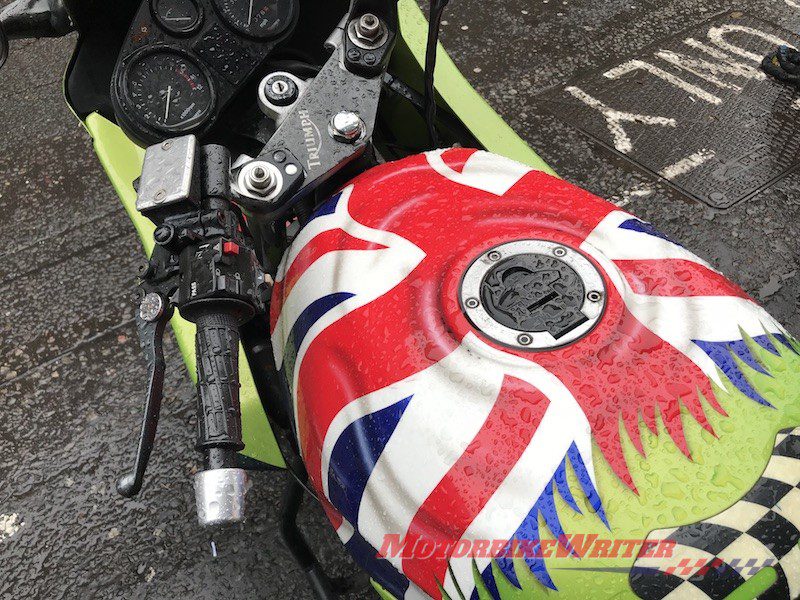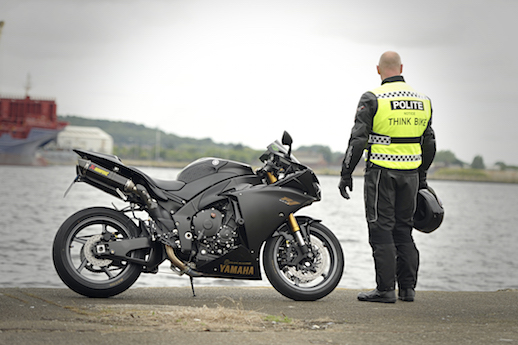Contributed post
When you get some great summer weather in the UK, what’s better than to jump on the bike and hit the open road! But how often do we actually think about our safety before we put on the lid, drop the visor and “head out on the highway”? We may have been Born to be Wild but most of us think we are good and responsible riders who won’t have an accident.
A study by the IAM revealed that the majority of collisions on the UK’s roads are caused by driver error, mostly due to lack of adequate observation. But, in motorcycle accidents, the most common elements involved are taking corners, overtaking manoeuvres, travelling too fast and tiredness. Add to this that, per mile driven, bikers are 38 times more likely to die in a collision than those travelling in a car, and the statistics make for grim reading.
As we love statistics, let’s have some better ones. In 2016 (data for 2017 has not been released yet), despite an overall rise of 2% in motorbike traffic, fatalities fell by 18% from 2015, and overall injuries dropped by 3%. However, we should not become complacent, so here’s some safety tips that you probably know but might not always think about.
Dress for the Slide
On a hot, sunny day it can be so tempting to get on the bike wearing shorts and a T-shirt and get the exhilaration of the speed while feeling the cooling wind on your skin. But don’t do it! Motorcycle gear can be hot, but wearing a vented jacket can help and, with modern materials, you can get cooling lower layers which wick away moisture and disperse body heat. And don’t forget the boots and gloves. If you do come to grief, it’s better to be too hot than to leave several layers of your skin on the tarmac!
Check the Forecast
When you’re planning a long ride, there might be sunshine and wall to wall blue skies. But, in the middle of a hot spell, it is not unusual to have sudden thunderstorms. Getting caught far from home without being prepared for rain can result in a miserable journey back. The roads can also be treacherous under those conditions. Check the weather forecast for the areas you’ll be riding through and, even if it’s wrong (again), you’ll be ready.
Inspect Your Bike
It’s easy to take for granted that each time you get on your bike, it’ll start and get you to wherever you’re going. But, if you don’t check it over regularly between services (which we all get done – don’t we?), things can change or deteriorate without you noticing. It only takes a few minutes to check the tyre pressures and for any new damage, that fluid levels are topped up, the lights are all working, brakes are okay, chain tension is good and that nothing is loose that shouldn’t be.
Don’t be Invisible
We all know that, despite all of the advertising campaigns, car drivers still don’t take enough care to look out for bikes at junctions and when changing lanes, etc. (Check out this SMIDSY ad, the bikers revenge!).
So, you need to make yourself as visible as possible; you might love your black leathers, but they won’t get you seen. At night wear Hi-Viz vests or reflective bands. During the day bright clothing will make you more noticeable. Many new bikes are now fitted with daytime running lights (DRL) but, if you don’t have those, use dipped headlights (main beam is really annoying to other drivers, even in daytime).
Play to the Rules
It may sound trite, but the rules of the road are there for everyone. Where there is a lower speed limit, it’s been dropped for a reason. Remember that excess speed is a major contributory factor in many motorcycle accidents. Observe road signs and lane markings and clearly indicate your intentions. It’s not just about being a safe, responsible rider; it’s showing respect for other road users and, in return, being respected.
Drive Defensively
Rule one – treat every other driver as a complete idiot! Someone will eventually prove you right. When you approach junctions, assume that a car will pull out in front of you. Where there are two or more lanes assume that someone will move into your space without looking. By preparing for the worst, you will be prepared to take the appropriate action when it happens. If somebody does cause you to have a collision, head over to accidentclaims.co.uk for more information.
Ride to Your Ability
When you’re on the road, you should be aware of your level of ability, which will increase the more you ride and gain experience, but you shouldn’t push it. A worse thing is to be cocky and not think about your limitations. You might have passed a bike test, but you never stop learning to ride.
Also, if you’re riding in a group and you feel uncomfortable with the speeds others are doing for the conditions, pull back. They’ll wait for you and, even if they don’t, you’ll get there alive.
Certain challenging routes attract bikers who want to push themselves, but don’t get dragged into a competition that makes you reckless.
Advanced Riding
One of the best ways to have your riding capability assessed and to improve your standard of riding is to take an advanced riding course. Both the Institute of Advanced Motorists (IAM) and RoSPA Advanced Drivers and Riders (ROADAR) offer courses run by volunteer trained observers. The aims are to make you the best rider you can be, reduce your accident risk, improve fuel consumption and reduce the wear and tear on your bike through efficient, sympathetic riding. It could have financial benefits too, as some insurance companies give additional discount to advanced riders.
Enjoy the Road
Whether you’re riding close to home or planning a long-distance biking tour, take some time out to prepare for the journey. Stay safe on the road and enjoy the ride.





